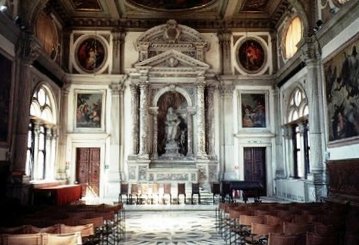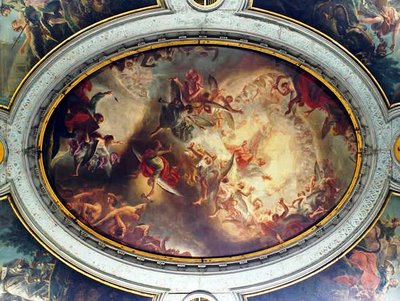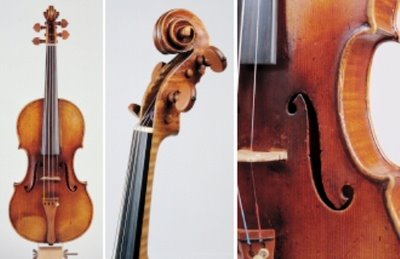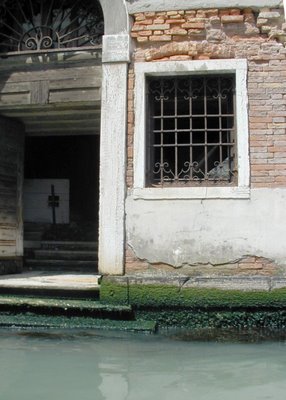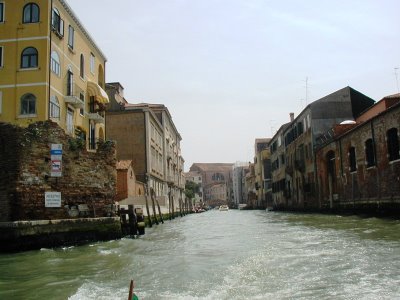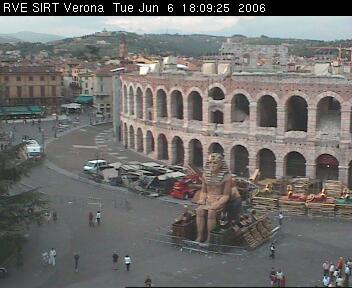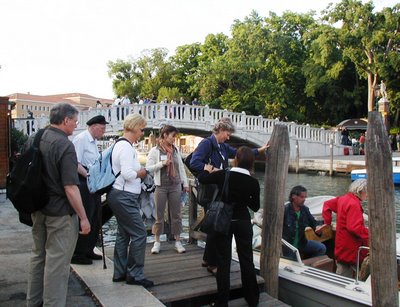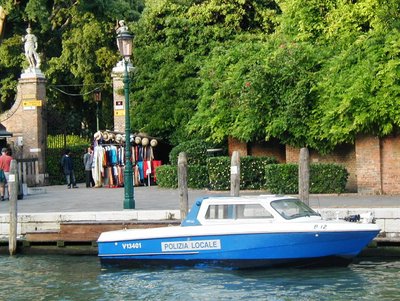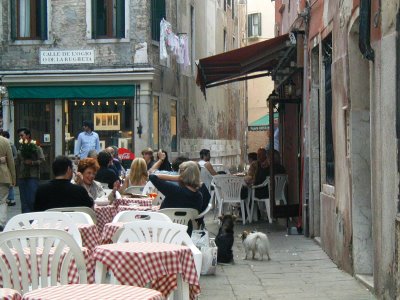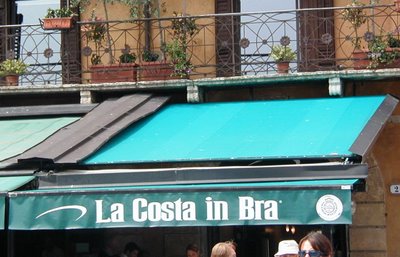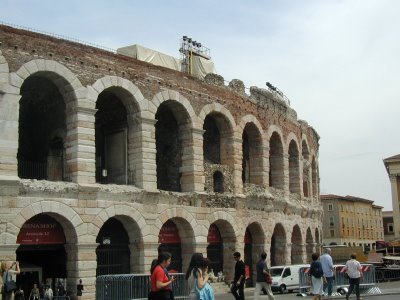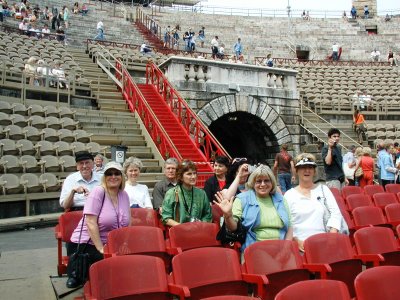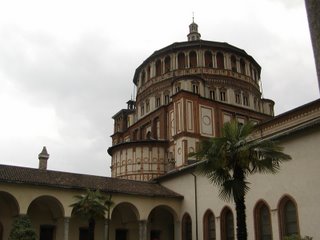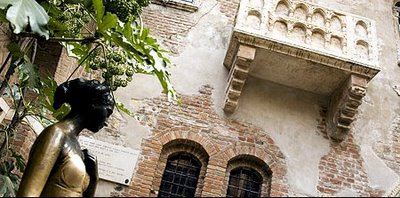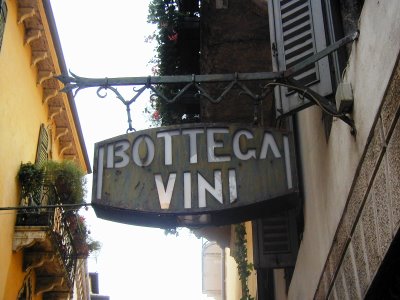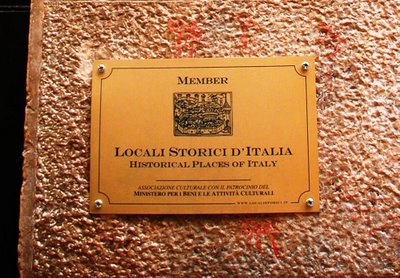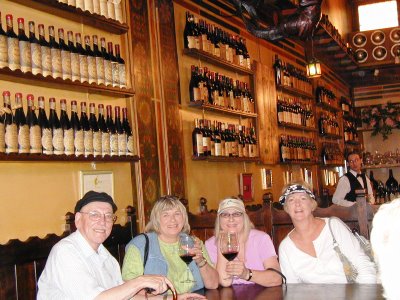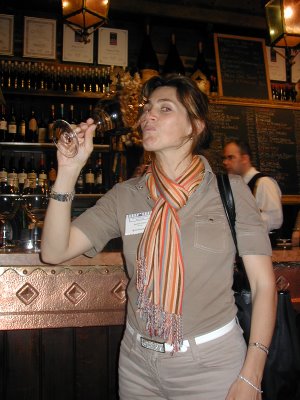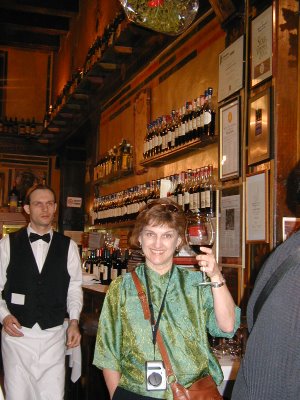Remember this picture of my Ligurian seafood platter that made so many readers gasp, salivate and then curse me?
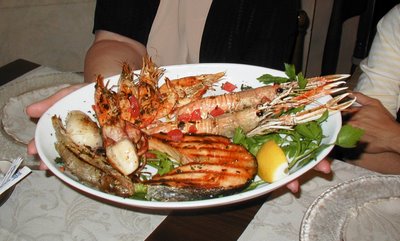
I was just reading over the earlier posts and saw that I'd promised more information on the wonderful restaurant, Lupo Antica Trattoria.
Even though it was barely 25 meters from my hotel, I would have missed it save the recommendation of Signora Arianna. As I've told you, Genoa is a maze of narrow little alleys called caruggi, some of which disappear steeply downward from main streets to goodness knows where.
Now I know some of them disappear into heaven.
Such was Vico Monachette, a stone's throw from the Ramada on Via Balbi, in the heart of medieval Genoa. Lupo's is a warm and cozy little inn, which opened a little early for us, thanks to the sainted Arianna's advance calls. The restaurant prides itself on serving the best Liguria has to offer, prepared creatively. The chef adjusts the menu weekly to accomodate the freshest catch or produce. The bilingual menu's English section was charmingly awkward, a word-for-word translation from Italian.
Liz, Cherri, Arianna and I began our meal with an antipasto of grilled radicchio in a roquefort-pine nut sauce. The bitterness of the vegetable was perfect with the creamy cheese and nuts. There was still a little crispness to the radicchio, which contrasted nicely with the velvety smoothness of the sauce.
 Our primo piatto was a fresh herb-filled pasta called pansotti, which could be described as triangular ravioli. These little "potbellies" (for that is what the word means, I'm told) came dressed in a creamy walnut sauce (salsa di noci) that screamed, surrender to me!
Our primo piatto was a fresh herb-filled pasta called pansotti, which could be described as triangular ravioli. These little "potbellies" (for that is what the word means, I'm told) came dressed in a creamy walnut sauce (salsa di noci) that screamed, surrender to me!
You've seen the picture of our grilled seafood entree - scampi, prawns, salmon, octopus, and little white fish. It was just barely seasoned. I really appreciated the restraint. The chef was obviously skilled and could have done a million things to the dish, yet chose to respect the quality and freshness of the ingredients and let the food speak for itself. You know, this takes a generosity of spirit - to take oneself out of the equation and let the seafood be its own star. Bravissima.
Our other entree was a typical Ligurian dish - fish and potatoes in basil pesto. So simple, so delicate, so fresh, and oh, so delectable.
The house red wine was an excellent dolcetto, the charms of which I've already sung loud and long in several previous posts. It's most definitely my favorite red now.
We finished up with the best tiramisu I've ever tasted. If you've ever tasted the "faboo" tiramisu made by my dear friend Tina, you'll know this praise is not easily earned. Lupo's version was whipped up to an ethereal airiness, yet the tremendous chocolate, coffee and grappa flavors stood confidently through those creamy layers. But just as I was about to swoon from this, Arianna gave me a taste of her tarte tatin, as warm upside-down apple tart. (Yes, it's a French dessert. Let's not quibble about that while I'm having a moment here.) O Puccini! O Rossini! O Verdi!!! See why I love Genoa so?
As we were leaving I spied The Quartet and wandered over. They were in the middle of rolling their eyes over risotto dell'arancie, Orange Risotto. I wished it was time for dinner to start all over again.
Lupo. Just one more reason I have to get back to Liguria.
Gillian Coldsnow

